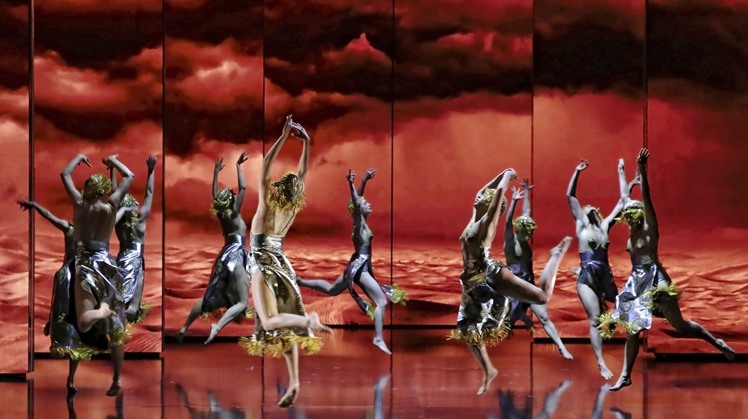May 6 is a significant date in Melbourne’s COVID-era recovery. The State Theatre will come alive after a year in darkness, when Opera Australia performs here for the first time since December 2019. Unlike many other performing-arts organisations, which have cautiously approached this pandemic year with small casts and minimal sets, the company is returning to its southern port with all guns blazing.
Next month, Opera Australia is treating Melbourne to lavish sets and costumes, and big singers – both in terms of reputation and vocal capacity – in two Giuseppe Verdi operas notable for massive choruses. It’s a calculated risk for the company’s artistic director, Lyndon Terracini. “People are still nervous about going out,” he says. “We have to inspire them to take a risk ... because it’s going to be so fabulous they’ll kick themselves if they miss it.”
First up is Aida, a co-production with Milan’s La Scala opera house featuring more than 100 musicians, singers, dancers and actors. Set in ancient Egypt, this opera has become synonymous with spectacle since its premiere in 1871 – even being presented as an outdoor extravaganza with wild animals on numerous occasions, including at Melbourne’s Princes Park in 1989.
“With Aida it doesn’t matter how big you make it in a theatre.” says Terracini, adding with a chuckle that “if you have camels they’ll say ‘why didn’t you have elephants?’ And if you have elephants they’ll say, ‘well why didn’t you have lions?‘”
Opera Australia boss Lyndon Terracini: “If you have camels they’ll say ‘why didn’t you have elephants?’”
Opera Australia boss Lyndon Terracini: “If you have camels they’ll say ‘why didn’t you have elephants?’” CREDIT:DOMINIC LORRIMER
Opera Australia’s answer is 10 LED screens about seven metres high and two metres wide, which glide around the stage on tracks and can also rotate. They display ever-changing, high-resolution imagery to “create a much larger than life atmosphere”, says Terracini. The company’s first foray into digital productions, this Aida directed by Davide Livermore includes a serpent, a panther, a horse galloping through the desert toward the audience, and the Nile by night, shimmering in moonlight.
According to Cristiana Picco, writing from Milan via email, “Davide has a saying: if anyone feels bored during an opera it’s our fault, not the music or libretto.” Picco is creative director at Giò Forma, a multidisciplinary business merging physical and digital elements to create everything from event installations to opera sets, including several in collaboration with Livermore.
For Aida, in addition to tangible set components such as modular stairs and a pyramid, “we have designed a high-tech ‘content theatre’ to enhance the musical impact with a constantly changing architecture,” writes Picco. “Egypt is an imaginary place in our mind; a space we move without the restriction of the physical world.”
“It’s the biggest selling production of Aida the company’s ever had,” says Terracini. He believes younger people, who “live on screens”, have been crucial to its success. At several performances during its 2018 debut season in Sydney, the artistic director chatted with young audience members and discovered they were all seeing an opera for the first time, lured by this production’s reputation for “cool” digital elements.
 Mon, Apr. 26, 2021
Mon, Apr. 26, 2021